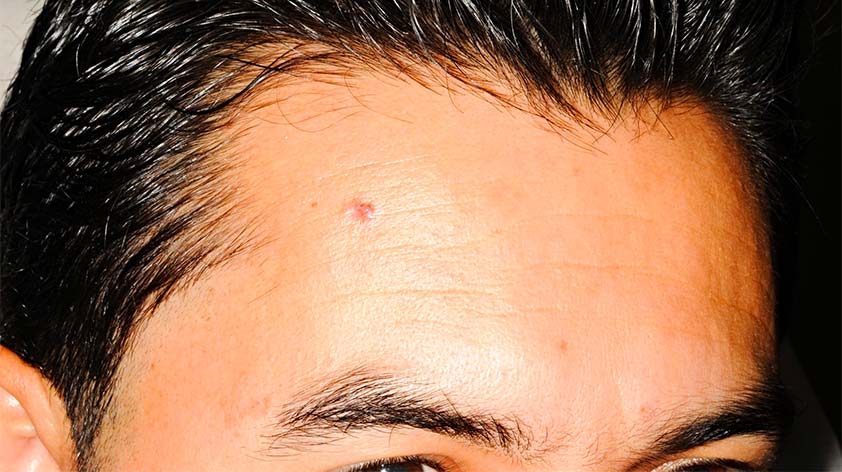
Since the face is the part of the body most exposed to sunlight, it is an especially vulnerable location for skin cancer to arise – most frequently basal cell carcinoma (BCC). Overexposure can also cause cancerous lesions like Squamous Cell Carcinoma (SCC) or Melanoma to form on its surfaces including neck or ears.
As per skin experts like Sundoctors they say that skin cancer on the forehead can easily be mistaken for moles or solar lentigo (liver spots). So, it’s crucial that any new spots appearing or existing ones changing could also be an indicator of actinic keratosis – a precancerous condition often leading to skin cancer in its later stages.
This article details both common and less prevalent forms of skin cancer on the face, including what lesions look like and who is at greatest risk.
How Common Is Skin Cancer?
According to the American Academy of Dermatology, an estimated one out of every five Americans will eventually develop skin cancer at some point during their lives; approximately 9,500 new cases are being diagnosed each day across America.
What are the Symptoms of Skin Cancer on the Facial Areas?
Cancer on facial areas tends to be detected earlier due to the time we spend in front of the mirror. Still, people may miss spots near or under their chin that seem new; when this happens they often forget if they were new or existing spots when first noticed.
Skin cancer symptoms on the face can vary depending on its type. A cancerous lesion can vary in appearance between individuals or skin tones.
Actinic Keratosis
Actinic keratosis, also known as solar keratosis, is a precancerous skin condition frequently found on the face – near the eyes, nose, ears or lips. Precancer refers to lesions which don’t meet formal cancerous criteria yet can turn cancerous with time if left untreated.
Actinic Cheilitis
Actinic cheilitis (AC) is a precancerous condition of the lip similar to actinic keratosis; some healthcare providers consider it early stage cancer of the lip. AC typically manifests itself with red, dry, scaling and itchy lips as well as inflammation affecting their surface area.
Basal Cell Carcinoma
Basal cell carcinoma (BCC) is the most frequently encountered type of skin cancer. Although they’re most often found on the head and neck area, BCC can occur anywhere on the skin and usually responds well to treatment and often cures itself completely.
Squamous Cell Carcinoma: Squamous cell carcinomas (SCCs) are the second-most prevalent type of cancers, accounting for 20% of non-melanoma skin afflicted cases.
Melanoma
Melanoma typically affects men’s trunk and legs; women may develop it on their legs. Though well-known as one form of skin cancer, melanoma accounts for only around 1% of cases diagnosed each year.
Sebaceous Gland Carcinoma
This is a rare skin cancer arising from the sebaceous glands. They produce oil and sebum which lubricate hair follicles to lubricate them properly, often on the eyelids because these areas contain numerous sebaceous glands.
While SGCs can develop anywhere on the body, most SGCs occur on upper or lower eyelids as this area has the greatest number of sebaceous glands.
Merkel Cell Carcinoma
This rare form of cancer of the head and neck typically manifests itself through rapidly growing, painless nodules that appear pink, red, or purple in color and can sometimes be mistaken for insect bites, sores, cysts, styes or pimples.
Conclusion
As the face is exposed to UV radiation from sunlight, it is often becomes the site for skin cancer. Basal cell carcinoma (BCC), squamous cell carcinoma (SCC), and melanomas are the three most frequently seen.
Other rare types include sebaceous gland carcinoma and Merkel cell carcinomas. Sometimes a new skin spot could be due to a precancer such as actinic keratosis or actinic cheilitis, both of which could progress into cancer over time if left untreated.
As skin cancer can take many different forms, it’s in your best interest to have any abnormalities examined by a dermatologist as soon as they appear.
To protect yourself against skin cancer, be sure to use sunscreen, wear protective clothing, and limit sun exposure as much as possible









